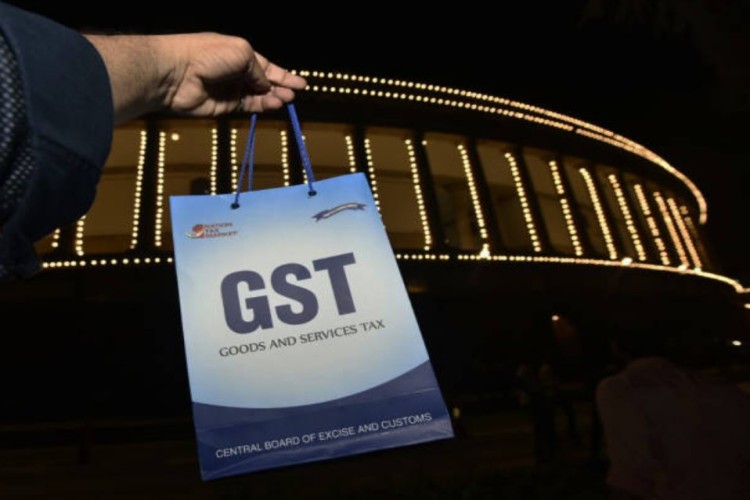
The government is taking a big step towards rationalising the Goods and Services Tax after revising income tax slabs in the Union Budget 2025-26. Efforts are underway to simplify and streamline the GST system which has been criticised for becoming increasingly complex in recent years despite initial promises of tax simplification. Reports suggest that the government may completely eliminate the 12% slab.
Discussions on simplifying Goods and Services Tax gained momentum after the December GST Council meeting in Jaisalmer introduced three different tax slabs for popcorn varieties. The move sparked criticism from both economists and the public, who pointed out that GST was originally designed to simplify taxation, not complicate it further.
READ | The cost of protectionism: Trump’s tariffs could backfire on the US
Experts argue that such classifications add unnecessary complexity to an already convoluted system. Former Chief Economic Adviser Arvind Subramanian also criticised the move, calling it contradictory to the Good and Simple Tax philosophy.
India’s GST regime
India’s GST structure currently consists of multiple slabs—zero, 5%, 12%, 18%, and 28%—with an additional compensation cess levied on sin and luxury items. The regime stands out globally for its intricacy. Examples abound, from varying rates on rotis and parathas to differential taxation on buns and cream buns. Such inconsistencies increase compliance burden and reduce ease of doing business, ultimately defeating the core purpose of GST.
Moreover, the GST Council has struggled to address key issues such as bringing aviation turbine fuel under Goods and Services Tax and rationalising rates for health and life insurance. Despite the urgency of these matters and longstanding industry demands, the Council has repeatedly deferred these decisions. It has also extended the mandate of ministerial panels on rate rationalisation and compensation cess.
The compensation cess, originally introduced to offset state revenue losses during the pandemic, has been extended until March 2026. Economists argue that it should be phased out, as it has long exceeded its intended duration. Furthermore, they highlight the need for legal reforms if the cess is to continue beyond its current mandate, warning that prolonged reliance on temporary measures risks destabilising the GST framework.
Proposed changes to GST slabs
The ministerial panel overseeing GST rate rationalisation has initiated discussions on revising the classification of items within each tax slab. Initially, the panel proposed retaining the 12% GST slab along with the other key slabs, but internal discussions flagged this as inconsistent with the goal of reducing the number of slabs. The panel is expected to revisit the matter.
One proposal under consideration is merging the 12% and 18% slabs to create a new 15% slab, thereby simplifying the structure to three tiers. However, this proposal has not gained widespread support due to the significant revenue loss associated with lowering the 18% rate. To provide perspective, approximately 70-75% of total GST revenue is generated from the 18% slab, whereas the 12% slab accounts for only 5-6%. Moreover, essential items such as pharmaceutical products, currently taxed at 12%, would become more expensive under a 15% slab, raising concerns about affordability.
Future of GST reform
Globally, the best tax regimes are fair, transparent, equitable, and, most importantly, simple. India, too, would benefit from a more straightforward GST structure. Achieving this would require a complete overhaul of the current system.
The first step should be consolidating tax slabs. The present five-tiered structure is overly complex, and reducing it to two or three slabs would streamline compliance and reduce tax disputes. Additionally, eliminating arbitrary distinctions between similar goods—such as popcorn or parathas—would enhance fairness. Currently, food items are taxed at different rates based on their appearance or flavour, a practice that is neither logical nor efficient. A uniform rate for all food items would significantly simplify compliance.
Economists highlight an imbalance in fiscal federalism under GST, where states have lost key revenue sources but continue to bear responsibility for funding expanding social welfare programmes. This often results in politically motivated spending, leading to unhealthy competition among states and turning welfare schemes into vote-buying tactics rather than sustainable development strategies. Recent examples from Jharkhand, Maharashtra, and Karnataka illustrate this concern. Revisiting the devolution of taxation powers could address these imbalances and empower states to better meet their local developmental needs.
As the government embarks on the path of rationalising the GST system, the review must prioritise simplification of tax slabs, rationalisation of exemptions, and a thorough examination of the fiscal federalism structure. These reforms will help GST live up to its original promise of being a truly Good and Simple Tax.
